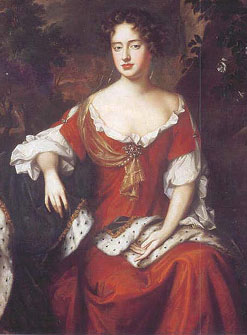Pavi92 |
|
|  A photo of the Queen Anne A photo of the Queen AnneQueen Anne was the Protestant daughter of James II. She was the ruler of Great Britain after the union of the English and Scottish Parliaments in 1707 with the Act of Union. To protect Great Britain interests abroad, it had entered the War of the Spanish Succession with Holland and Prussia against France, Spain and Portugal. Peace was made with France and Spain, and the Treaty of Utrecht was signed in 1713. It leads to a balance of power and to an equilibrium of European forces, and so no single European nation had continental supremacy. Great Britain retained Gibraltar(is still an English protectorate) and Minorca, strategically important for their influence in the Mediterranean, and gained the Acadia and Hudson Bay, important for the maritime control of Canada, like the island of Newfoundland. So they have important allies. Moreover, they gained the permission to send a ship once a year in South-America: it is very important because they could trade with the Spanish South-American colonies, as well as the monopoly of the African slave trade for her own North-American colonies(where there were plantations). England became an industrial and commercial machine: in fact, there were links between the world of industry and the world of politics, because industry made money and the country became richer. The form of contraband was practiced, although it was forbidden: in fact, trade with the Spanish colonies was officially forbidden. Britain’s foreign policy was directed towards protecting and increasing commercial interests abroad. Private capital was used to support political enterprises. In 1694 the Whigs had founded the Bank of England, a national bank whose solidity was guaranteed by the State. Fonte: Pavi92 https://myenglish.blogfree.net/ |
| | |



